
The Choir of King’s College, Cambridge
Founded in the 15th century, the Choir of King’s College, Cambridge is world-famous. Millions listen its annual Christmas Eve service, A Festival of Nine Lessons and Carols. The choristers, choral scholars, and organ scholars sing daily services and study at King’s College School and the University of Cambridge. The Choir has produced renowned professional singers and performs internationally.
Our Story
Present
-
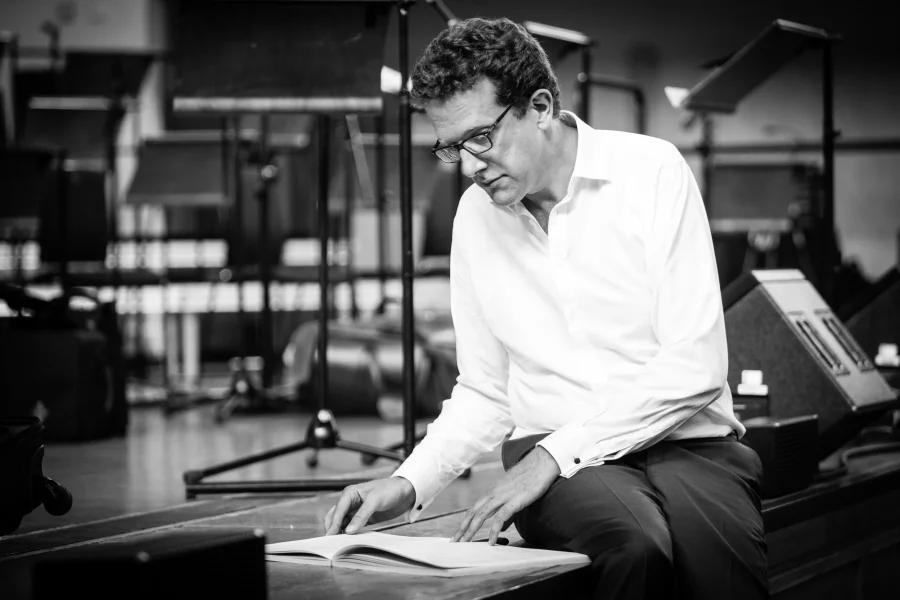
Director of Music
Daniel Hyde is Director of Music at King’s College, Cambridge. Daniel Hyde has been Director of Music at King’s College, Cambridge since 2019. As well as directing the world-famous choir in daily services, he regularly conducts concerts and broadcasts at home and abroad. Born in the UK, schooled as a chorister at Durham Cathedral, he was made a Fellow of the Royal College of Organists at the age of 17 and won the organ scholarship to King’s College, Cambridge; upon graduation he took up the position of Director of Music at Jesus College, Cambridge.
In 2009, he became Informator Choristarum at Magdalen College, Oxford, where he was also an Associate Professor. In 2016 Daniel became Organist and Director of Music at Saint Thomas Church, Fifth Avenue, New York City. In September 2024 he became Musical Director of City of London Choir, alongside his commitments at King’s.
As a conductor, Daniel has worked with many of the world’s leading ensembles including the BBC Singers, the London Bach Choir, Britten Sinfonia, Philharmonia Chorus, Philharmonia Orchestra, BBC Concert Orchestra, Royal Philharmonic Orchestra, the Orchestra of the Age of Enlightenment, the Orchestra of St Luke’s and New York Baroque Incorporated.
As an organist, he has performed throughout the world. Regular appearances include at the BBC Proms including his solo debut performing Bach’s Canonic Variations at the organ of the Royal Albert Hall in 2010. In 2021 he was concerto soloist at the First Night of the Proms. As an ensemble player he has appeared extensively with the likes of Phantasm, the Britten Sinfonia, The Tallis Scholars, Aurora Orchestra, and Gabrieli Consort. Daniel’s varied discography can be found on the King’s, Opus Arte, Linn, Naxos, EMI and Priory labels.
1982-2019 Sir Stephen Cleobury
1974-1982 Sir Philip Ledger
1957 Sir David Willcocks
1940-1945 Harold Darke (Boris Ord’s substitute during the war)
1929-1957 Boris Ord
1876-1929 Arthur Henry Mann
1855-1876 William Amps
1799-1855 John Henry Pratt1742-1799 John Randall
1726-1742 Robert Fuller
1670-1726 Thomas Tudway
1627-1670 Henry Loosemore
1624-1627 Giles Tomkins
1622-1623 Matthew Barton
1606-1619? John Tomkins -

The Choir Today
King’s College Choir comprises choristers, aged between nine and 13 years, who are educated at King’s College School, and adults, reading for degrees in a variety of subjects. There are places for two organ scholars.
Singing at daily Chapel services is the Choir’s primary duty, and has been since the foundation of King’s College in 1441, when King Henry VI envisaged that the Choir would provide music for the daily offices and celebrations of the Mass in his new Chapel. Daily services are not the Choir’s sole commitment today though: its worldwide fame and reputation, enhanced by its many recordings, has led to invitations to perform around the globe, and to an extensive international tour schedule.
King’s College Choir’s primary purpose is to sing the daily choral services in Chapel during term-time. This the Choir does on six days a week. The services on Mondays are sung by the College’s mixed voice choir, King’s Voices.
The boy choristers are educated just across the river at King’s College School. They have exactly the same education as the other 350 or so boys and girls at the School; their choral commitments come before and after school hours.
-
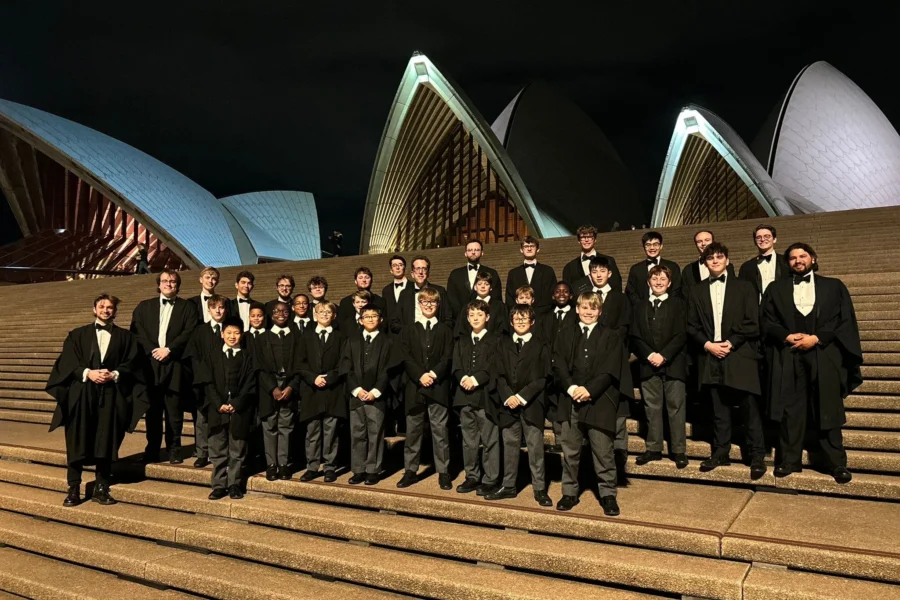
Concerts in the UK and Overseas
The Choir performs extensively in the United Kingdom, appearing regularly at major halls in London and in the regions, including London (Barbican), Manchester (Bridgewater Hall), Birmingham (Symphony Hall), Cardiff (St David’s Hall) and in Edinburgh (Usher Hall).
It has appeared at the BBC Proms on a number of occasions, performs regularly with the Academy of Ancient Music, Britten Sinfonia and the BBC Concert Orchestra, and gives an annual Christmas concert in London (Barbican Centre), with the Philharmonia Orchestra. Festival appearances have seen the Choir at The Sage, Gateshead, the City of London Festival, Chester Music Festival, Windsor Festival, King’s Place (Mozart and Bach festivals), St Albans International Organ Festival, Norfolk & Norwich Festival, and Aldeburgh Music.
The Choir Overseas
King’s College Choir has been performing abroad since its first overseas invitation in 1936. Tours have taken the Choir to Asia, the USA, Australia and across Europe.
1900
-
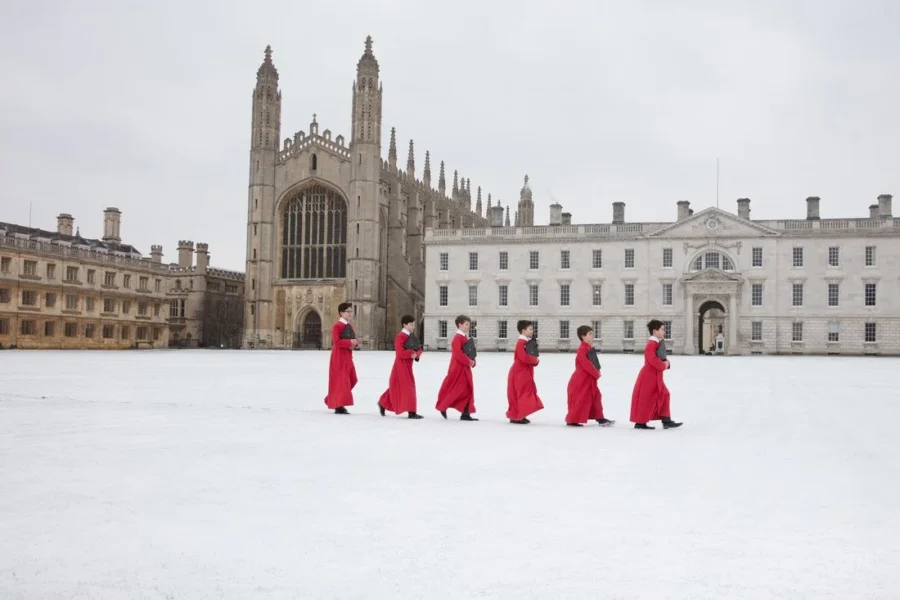
The Recent Past
In the mid 1950s, when Boris Ord’s health was declining, David Willcocks was appointed Organist while Ord took on the new role of ‘Director of Music’. When Ord died in 1957, Willcocks became ‘Organist and Director of Music’, a title which his successors Philip Ledger and Stephen Cleobury have held.
Continuous expansion led the School to acquire St Martin’s House in Grange Road, which provided new classrooms and junior dormitories; a new choristers’ block was built in 1970 and the school became co-educational in 1976. Its buildings were expanded considerably during the 1990s and in the early 2000s under the headmastership of Nicholas Robinson, providing new chorister rehearsal rooms and individual practice rooms for each of the boys.
In more recent times, the Choir has gone from strength to strength. The international reputation of the Choir was enhanced by the many recordings it made, especially in the early days of LPs, under David Willcocks and Philip Ledger, a tradition which has been maintained and brought into the era of recordings and webcasts by Stephen Cleobury, who was appointed in 1982. It has had fruitful relationships with Decca and EMI, and in 2012 the College launched its own recording label.
The impact of King’s Choir upon the professional music scene has been extensive in recent decades. Sir Andrew Davis, a former King’s Organ Scholar, succinctly sums up the success of many King’s musical alumni: Their success has a lot to do with the music directors they’ve had. After David Willcocks came Philip Ledger, and then Stephen Cleobury. Plenty of other cathedrals have the same routine but not the same results.
-

The Second World War
During the Second World War, many choral scholars as well as the Organist and Organ Scholar (Boris Ord and David Willcocks) joined the armed forces. During this time Harold Darke acted as Organist; the School continued to function, but the lower voices of the Choir were provided by a very few choral scholars and a number of volunteers.
The Chapel was dark and cold: the stained glass windows were removed and kept in safe storage, replaced by blackout material and grey tar-paper which rattled furiously in the wind. The BBC, however, continued to broadcast the Christmas Eve service annually. The Choir even took part in a war propaganda film, ‘Christmas under fire’, which was designed to elicit American support for the war effort.
Following the War, the Choir made its first commercial records, and the increase in broadcasting, initially as part of the war-effort, became a habit. In the immediate post-war years, King’s made frequent broadcasts. The first television recording of a shortened version of the Christmas Eve service took place in 1954, and regular TV broadcasts took place from 1963.
-
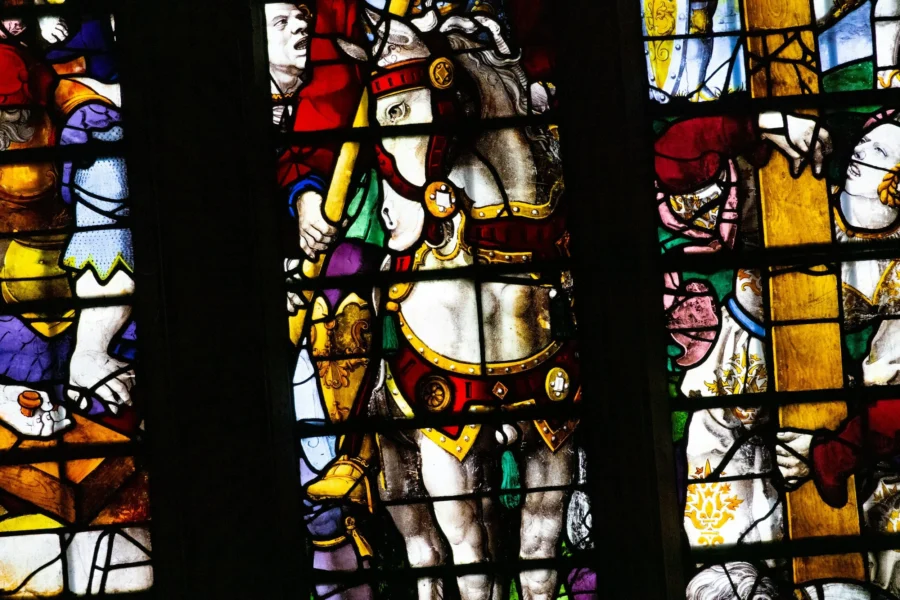
A Festival of Nine Lessons
Among other notable developments was the creation of A Festival of Nine Lessons and Carols by Dean Eric Milner-White in 1918, based on a Christmas Eve service that had been introduced by Bishop Benson at Truro Cathedral.
Mann reluctantly yielded to suggestions that the repertoire be expanded to include Tudor music, alongside the Victorian music that he tended to favour.
The first radio broadcast from King’s was a Sunday service on 2 May 1926. Then in 1927 and 1929 the new HMV mobile van visited Cambridge to record the choirs of King’s and St John’s. Mann was dissatisfied with the result, however, and only two of the recorded tracks were released – Bach’s ‘Auf! Auf! Mein Herz’ (BWV 441) and ‘Gott lebet noch’ (BWV 46), released in 1931.
In 1928 A Festival of Nine Lessons and Carols was broadcast on Christmas Eve for the first time. It was broadcast the following year but for reasons that are not clear not in 1930. From 1931, the Festival of Nine Lessons and Carols has been broadcast annually.
The 1930s also saw the founding of an Organ Studentship in Dr Mann’s memory, removing the need for an unofficial assistant organist and adding to the Choir’s educational role. The decade also saw the first tours overseas, with an invitation from the newly formed British Council for Relations with Other Countries to tour Holland, Germany, Denmark and Sweden.
1800
-

The 19th Century
Musical standards and morale during the later 19th century fluctuated depending on who was Organist and Headmaster. In the late 19th century, in order to secure more consistently high musical standards, the College appointed Arthur Henry Mann , the first Organist whose appointment was made as the result of an open competition.
His task was to bring the Choir to greater musical ‘efficiency’, aided by a number of reforming fellows who envisaged the Choir becoming part of the College’s educational mission. Reflecting the importance which the College attached to the post, a house was built for the Organist close to the School on West Road, known as Kingsfield, now occupied by students.
Under A.H. Mann, the lay clerks were gradually replaced by undergraduate singers – ‘choral scholars’. It was, inevitably, a slow process, because of the existing contracts between the College and the lay clerks, and it was not until June 1927 that the last of the lay clerks left the stalls
-
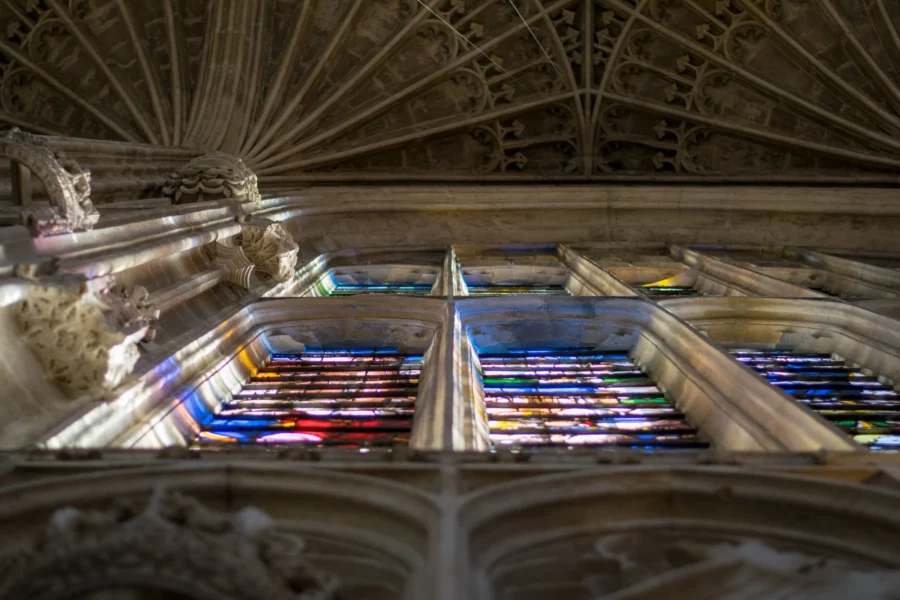
The 19th Century continued
There were times during the 18th and 19th centuries when the quality of the Choir declined, and although the School never closed down, the Brick Building was appropriated to become part of the Provost’s Lodge some time before 1828 and the choristers had to move out to temporary accommodation.
Possibly because it was the only Chapel in the town open to the public, its services were always well attended, and there are accounts from the 1750s of ‘extraordinary music’ at King’s and of the Choir performing from the Chapel roof after sermons. In the late 1820s and early 1830s, Charles Darwin so enjoyed listening to the anthem on weekdays that he sometimes hired the King’s choristers to sing in his rooms at Christ’s College.
A highlight of the nineteenth century was the choristership of William Sterndale Bennett, son of a lay clerk, who entered the Choir in 1824 aged eight. Two years later he went to the Royal Academy of Music in London and, at 17, met Felix Mendelssohn, who invited him to Germany and later called him ‘the most promising young musician I know’. A prolific composer, Bennett became Professor of Music at Cambridge from 1856 to 1866 and Principal of the Royal Academy of Music from 1866 until his death in 1875.
Conditions for choristers and lay clerks were abysmal in the early 19th century, with rough initiation rites, street brawls with other schools and thefts from local shops (though an elderly former chorister recalling them in 1899 did so with nostalgia). Food allowances for older boys were supplemented by left-overs from the mid-day meals they served at. In 1856, an Act of Parliament allowed Cambridge colleges to rewrite their statutes. At King’s, the new rules required the Organist to give choristers instrumental instruction, and financial aid was provided for former choristers who continued their education.
The new Choir School in West Road, completed in 1878, was austere, with no central heating or hot water and only one bathroom shared by the Headmaster, his family and the boys. Rules also forbade choristers from visiting undergraduate rooms or receiving presents from members of the University. There were no uniforms, but choristers had to wear an Eton suit, top hat and Eton collar going to and from Chapel. This remains the custom today.
1600
-
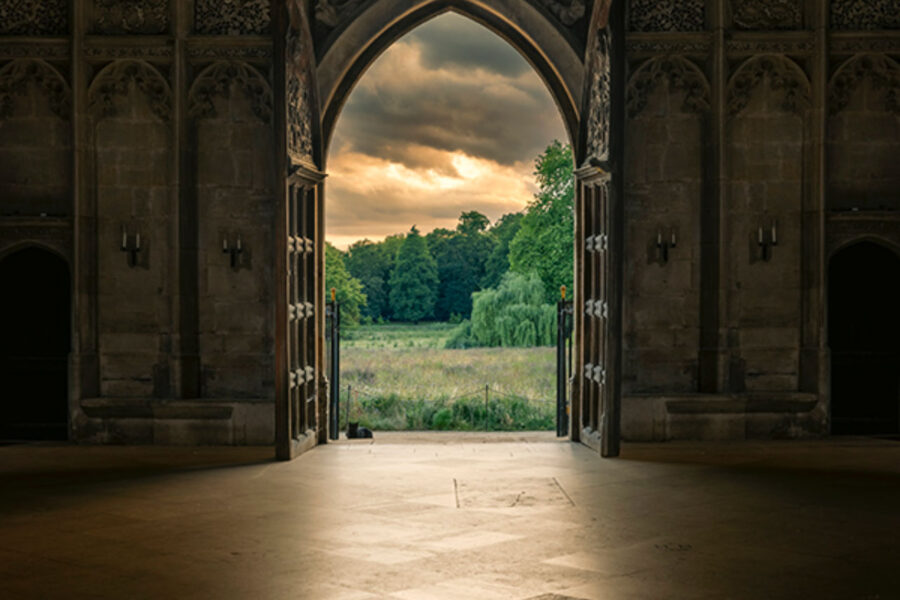
The Stuarts, the Commonwealth and the Restoration
In 1596, the twelve year-old Orlando Gibbons entered the Choir as a chorister, probably under the direction of his eldest brother, Edward, who was then the Organist. In 1598, Orlando entered the University and gained the degree of Bachelor of Music in 1606.
At the age of 21, he was appointed as ‘gentleman’ and Organist of the Chapel Royal by James I. During his short lifetime, he showed himself to be one of the most versatile English composers of the age. His numerous sacred and secular compositions remain in the repertoire; his death on 5 June 1625 is regularly marked by the singing of his music at Evensong.
John Tomkins, brother of the composer Thomas Tomkins, was officially appointed as Organist in 1606 and he stayed until 1625. During his tenure, the Choir flourished and a very high standard of singing was attained. Following this, however, the Choir’s fortunes fell and, by 1636, when Archbishop Laud sent visitors to King’s, they reported that the ‘choirmen cannot sing and are divers of them very negligent. The choristers … come to service with surplices and when they list they come without them’.
In 1646, the Commonwealth forbade the recruitment of new choristers, in line with the puritan stance it took against music as part of church services. The organ was dismantled and each time a boy’s voice broke, he was not replaced; by around 1650 only one chorister and five layclerks remained. Sung services were completely suppressed from 1652 to 1660, although the Organist and Master, Henry Loosemore continued to draw his salary from the College.
With the Restoration in 1660, ten new choristers were immediately elected to the Choir. By 1666, the full number of sixteen was attained. The School admitted non-singing boys soon afterwards and, in 1693, a new School, known as ‘the Brick Building’ was built to the south of the Provost’s Lodge.
1500
-
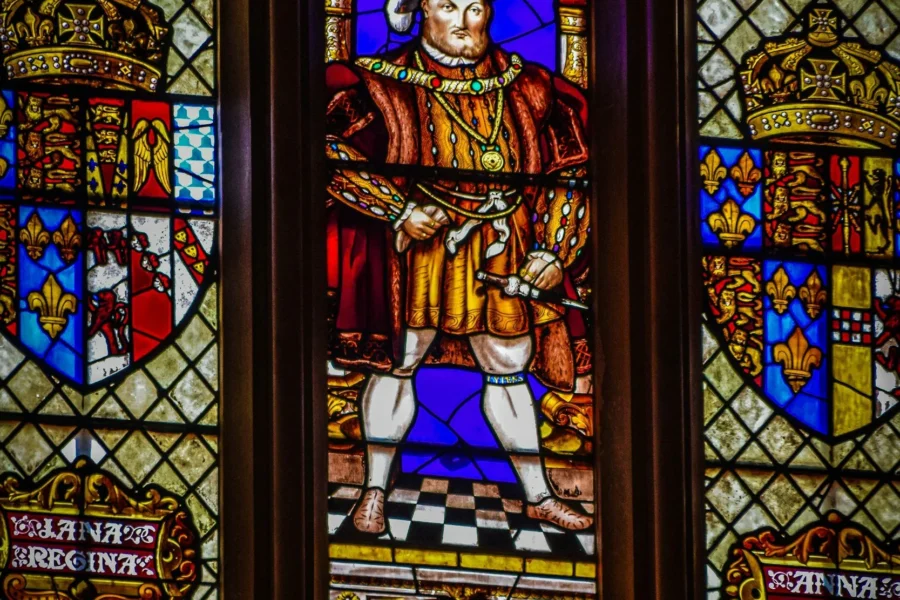
The Tudor Period
During the turbulent years of the Tudor age, as the role of music within the liturgy changed with each successive monarch, the Choir was disbanded around 1550 under edict from the Protestant king, Edward VI.
It was reconstituted during the reign of that Catholic Queen Mary (1553-58), and continued to thrive under Elizabeth I (1558-1603), for whom the choristers performed in Chapel in 1565.
Originally the choristers appear to have been local Cambridgeshire lads, either the sons of College servants or of those working elsewhere in the University, or of the lay clerks of the Chapel. But by time of Elizabeth I’s rule, they were drawn from across southern England, with three Devon-born boys recorded as having sung for the Queen herself.
1400
-
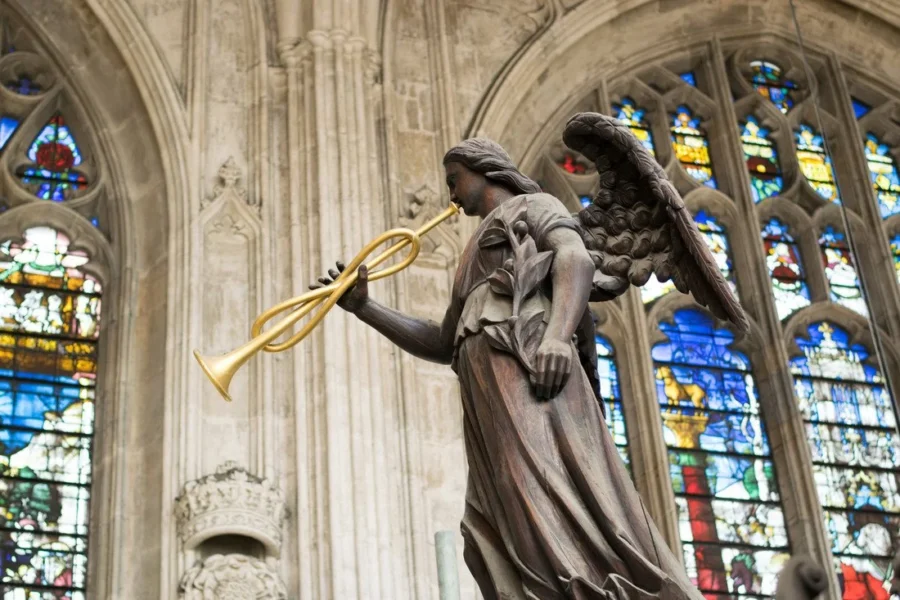
A Historial Overview
In the early years, the fortunes of College, the Chapel and the Choir were closely tied to those of the reigning monarch. During the Wars of the Roses, and especially after Henry VI’s capture in 1455 and death in 1461, Edward IV cut the revenues to the College and reduced the number of choristers (until 1467, when the number was restored to sixteen).
The Choir fared little better during the reign of Richard III and in the early years of Henry VII’s rule. In 1506, though, Henry VII attended Evensong in the still incomplete Chapel and resolved to allow sufficient funds to complete the Chapel and support the Choir. Even though the Chapel was completed by 1515 by Henry VIII, the Choir continued to sing in a small, temporary chapel, until this collapsed in 1536 and they moved to the current Chapel.
In the early years of the 16th century, Christopher Tye, later to become a prolific composer of Church music, was a chorister at King’s. He later became a fellow of the College, and taught the boys singing.
-
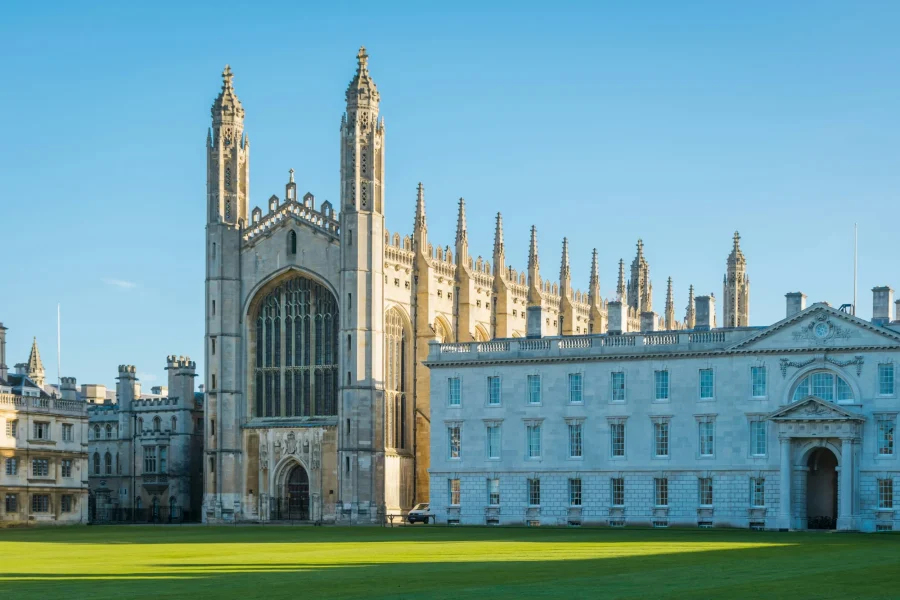
The Founder’s Vision
When Henry VI founded King’s College in 1441, it was his intention that a choir would provide music for the daily offices and celebrations of the Mass. The College Statutes of 1453 stipulate that the College would consist of a Provost, seventy fellows and scholars, and a choir composed of ten secular chaplains, six stipendiary lay clerks (or ‘singing-men’) and sixteen choristers.
Henry VI specified that the choristers were to be poor boys, of strong constitution and of ‘honest conversation’. They had to be under twelve years of age when admitted, and able to read and sing. In addition to their choral duties, singing daily Matins, Mass and Vespers, they were to wait at table in Hall.
The boys were provided with meals and clothing, and eight pence a week for their board. They were not allowed to wander beyond the College grounds without permission from their Master or the Provost.
The earliest record of a permanent schoolmaster dates from 1456, when Robert Brantham, a former Eton and King’s scholar, held the post of master over the choristers, as well as singing in the Choir. Except for a few years in the 1550s under Edward VI, and during the period of the Commonwealth in the 1650s, when choral services in the Chapel were suppressed, the Choir has been singing services continuously for over 500 years.